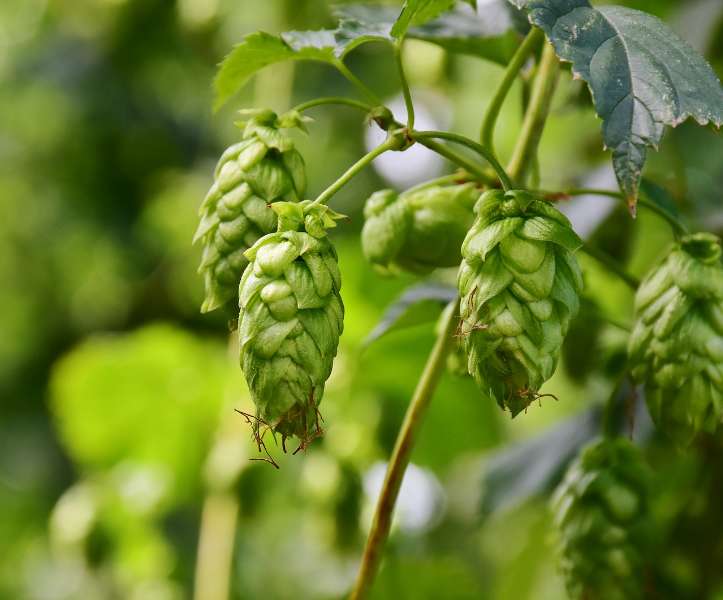There are four basic ingredients in beer: malted barley, yeast, water, and hops. So, what exactly is a hop? Hops are the flowers or cones of a plant called Humulus lupulus. They play a vital part in beer by adding aroma and flavour. Here are some fun facts about hops and the hop bine (not vine) for you to impress your friends while you’re drinking those beers:
• Hop is the flower of the female hop bine (it’s part of a small family of flowering plants called Cannabaceae — yes, its cousins are hemp and marijuana).
• The hop bine is a perennial and takes up to three years to mature.
• Hops always grow and twist in a clockwise direction.
• Most beers brewed today contain hops, but that wasn’t always the case. Early brewers flavoured their beers with a variety of herbs and plants such as rosemary, coriander, ginger, juniper berries, or a herb mixture called gruit.
• Historians think that the reason hops were first added to beer was for the flower’s antiseptic properties, not for its bittering flavour. Hops prevent beer from spoiling, so brewers could correspondingly lower the alcohol content. This meant they could use less grain in the brewing process and thus make more money off their concoctions.
• Brewers and homebrewers brew with hops for two different purposes and outcomes: bittering (what you’ll taste) and aroma (what you’ll smell).
• Germany still leads the world in hops production, and, in fact, the first documented instance of hop cultivation comes from the early 700s in the Hallertau region in the country. Hallertau hops are highly prized worldwide by today’s brewers.
• However, it wasn’t until the thirteenth century that hops started to become more prevalent than gruit (see above) in Germany for flavouring beer.
• In Britain, hops have been used consistently in beer since the 1500s, after being imported from Holland a century before that.
• Before mechanization, hop-picking was highly labour intensive (still is for most small farmers). George Orwell wrote about itinerant hop pickers (often called hoppers) in England in his novel A Clergyman’s Daughter.
• Hops are also used medicinally as a sleep aid. A popular folk remedy for sleeplessness is filling a pillow with hops. Many farms in the Appalachian region kept a hop bine for this reason.
• There are more than 75 varieties of hops.
• Hops are NOT good for dogs or cats. Keep them out of reach! Surprisingly, hops are healthy for chickens as they help their digestive system by keeping harmful bacteria from entering their intestines.
• A large portion of harvested hops are dried and pelletized. Most breweries use these pellet hops because they measure out, work with, and take up less storage space. Breweries will experiment with wet hopping, a process in which the whole hop is used.
Source: mountainx, akinz



































